5 Methods for Identifying Environmental Aspects and Impacts
Environmental aspects and impacts are a key part of any environmental management system (EMS). You need to identify, prioritize and include them in your EHS system. From there, it’s all about maintenance and continuous improvement. The challenge is there’s no one-size-fits-all approach for identifying your aspects and impacts. Luckily, we’ve rounded up five proven methods to help you find the right approach for your organization.
Definitions: aspects and impacts
First, let’s review the definitions for aspects and impacts. ISO 14001 defines an aspect as an “element of an organization’s activities or products or services that interacts or can interact with the environment” and an impact as a “change to the environment, whether adverse or beneficial, wholly or partially resulting from an organization’s environmental aspects.”
In layman’s terms, an aspect is a cause or reason and an impact is an effect or result on the environment. Because X (aspect), Y (impact) happened. Here are a couple of examples: Because of the oil spill, the soil has become contaminated. Because of the air emissions, the atmosphere has become polluted. Think in simple cause and effect statements.
Methods for identifying aspects and impacts
An organization’s aspects (causes) originate from its activities, products, and services, and once you’ve identified your aspects, impacts easily follow. Here five common methods to help you identify aspects and impacts:
Grouping methodology:
This method is just as the name suggests. You focus on one category at a time to identify aspects. Start with activities then move to products and finally, services. An activity, for instance, might be your fueling operation, and it may include several aspects, such as air emissions, chemical usage and spills. Each of these in turn has one or more impacts, from degradation of air quality to depletion of natural resources.
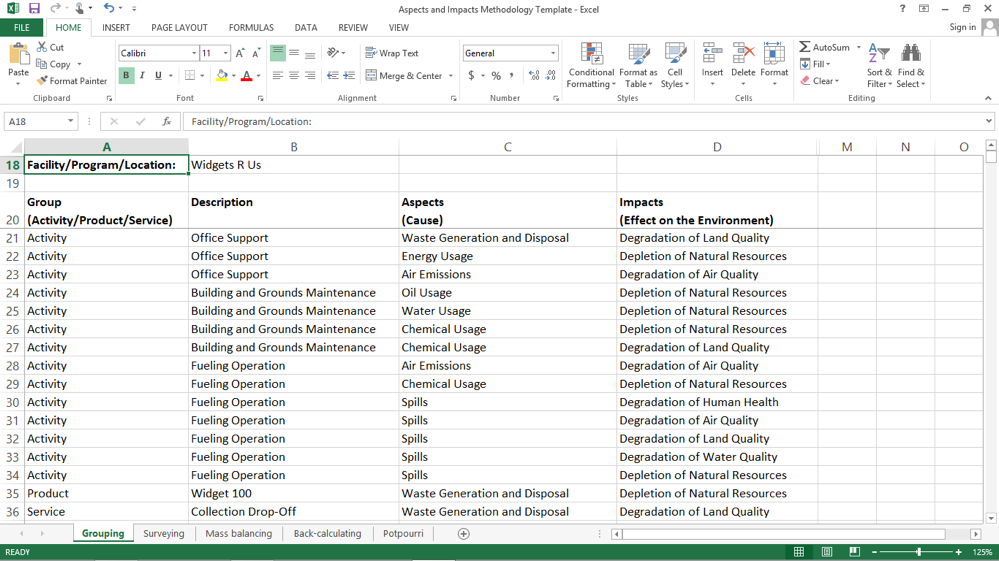
Surveying methodology:
This approach revolves around geographic areas. Typically, you’ll start at one end of your facility or site (property) and finish at the other end. It’s a detailed walkthrough with a well-defined purpose. Try making a drawing of your facility (or working from an existing floor plan) and documenting the location of all aspects. Then log everything in detail in a simple spreadsheet along with corresponding impacts.
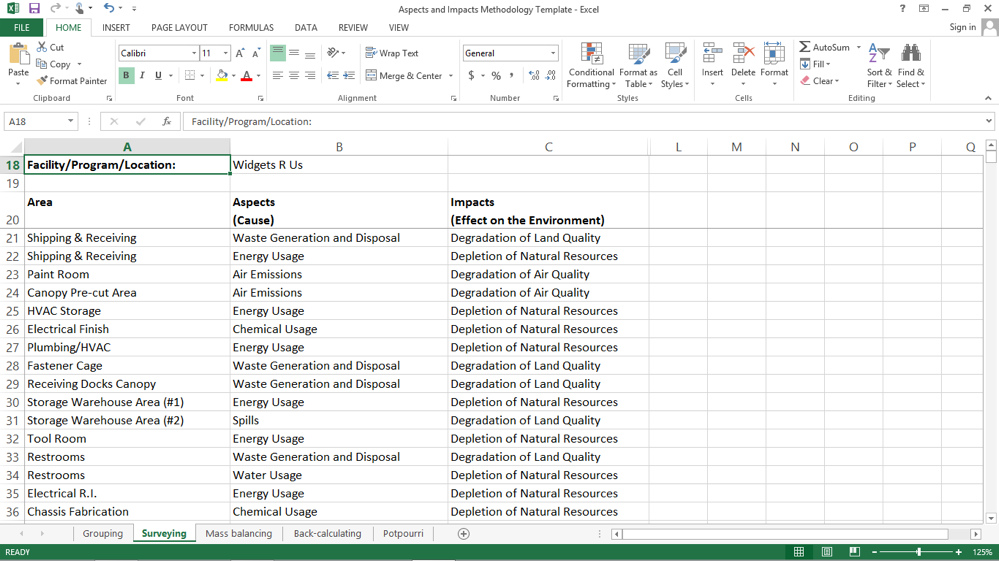
Mass balancing methodology:
If you’re an organization with an engineering mindset, the mass balancing or inputs and outputs methodology is probably a natural choice. It starts with all the inputs into your facility and finishes with the outputs. A short list of inputs might include people, equipment, chemicals, water and electricity. The corresponding outputs might be solid waste, fumes, widgets, wastewater, heat and radiation. Both lists nicely capture your aspects.
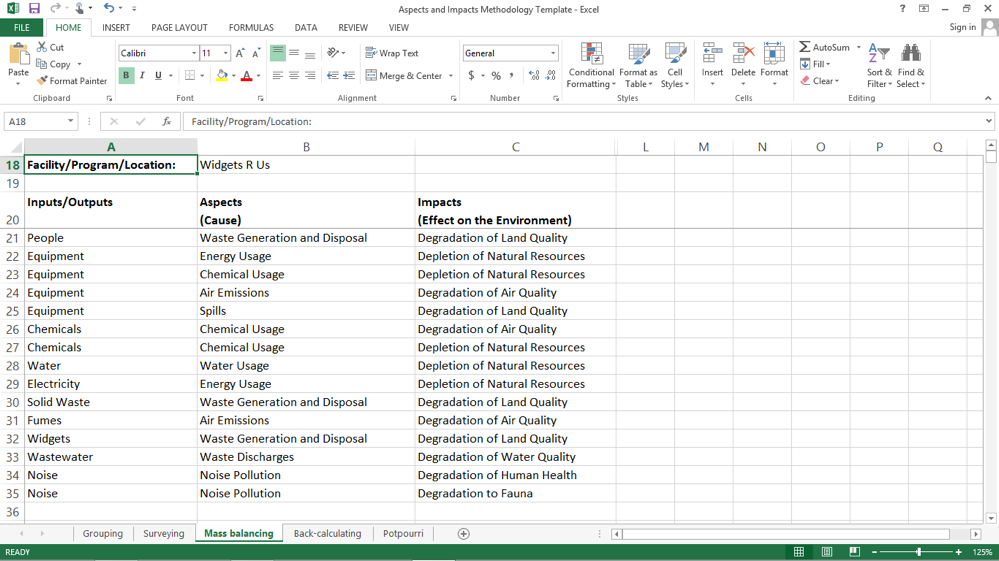
Back-calculating methodology:
Is your organization more science-minded? Try working backwards. You know the potential answers, and they’ll take you back to your aspects. Make a list of potential impacts (both negative and positive) your facility might have then work back to aspects. Sample impacts might be degradation of water quality or improvement of human health. Include both common and rare (emergency) impacts.
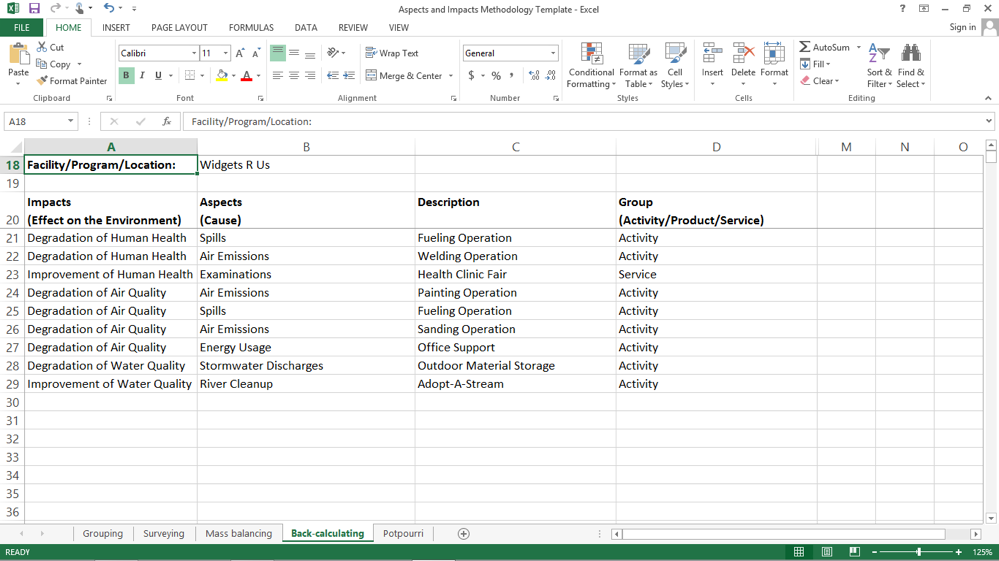
Potpourri methodology:
It’s a little bit of this and a little bit of that. The potpourri method generally combines two of the other methodologies. One common strategy is to combine grouping and surveying. You start at one end of the facility, focus on one area at a time and list out all activities, products and services. Then move to the next area and repeat. You’re finished when you reach the other end of the site or facility.
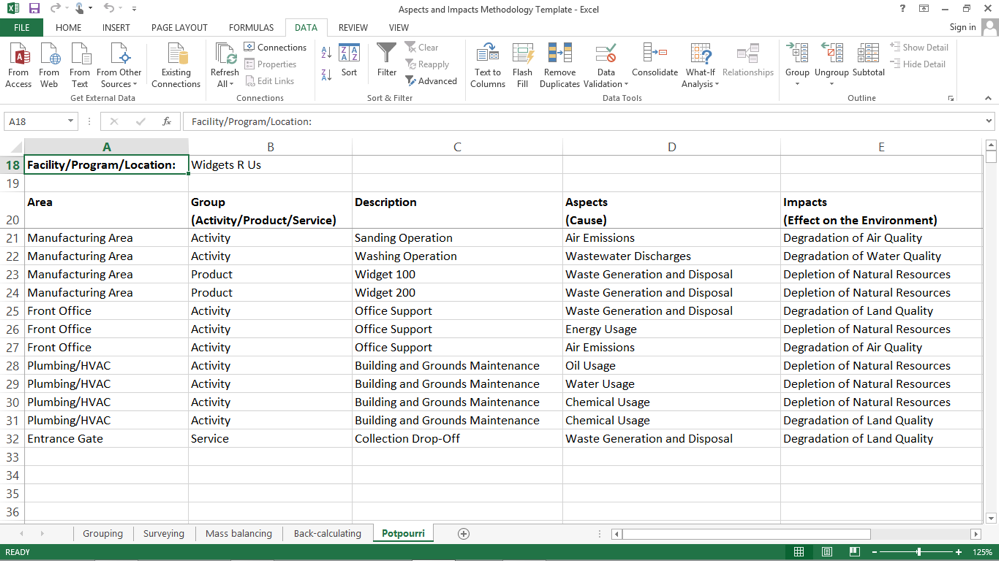
Each of these methods has pros and cons, but with a little experimenting, you’ll find the best match for your organization. Pick the method that sounds most appealing, gather a small group and start brainstorming. Then log your results. You’ll be well on your way to capturing your environmental aspects and impacts.
